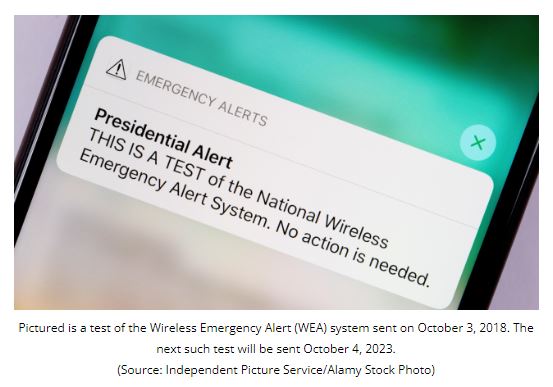Industry cautions FCC against complicating Wireless Emergency Alerts
The CTIA is among wireless industry stakeholders cautioning the FCC against complicating the Wireless Emergency Alert (WEA) system with additions of multimedia content and other requirements, which the CTIA told the Commission remains “fraught with practical and technical challenges.”
The organization’s latest comments on the matter, filed this week, are in response to the FCC’s notice of proposed rulemaking issued in April, and a further notice of proposed rulemaking released in June, on reforming the WEA system. Comments on the latter notice were due this week.
The FCC’s proposed reforms to the WEA system, which warns people of severe weather events and other emergencies, include:
- Enabling the sending of “thumbnail-sized images in WEA messages” (such as for Amber alerts);
- Requiring “participating wireless providers to ensure that mobile devices can translate alerts into the 13 most commonly spoken languages in the U.S. aside from English” and
- Establishing “minimum performance requirements for WEA reliability, accuracy, and speed that participating wireless providers must satisfy.”
The FCC also asked in its latest rulemaking notice whether and how to improve the system to accommodate sign language, and whether WEAs can support text-to-speech functionality “to accommodate individuals with vision disabilities.”
As FCC Chairwoman Jessica Rosenworcel wrote in a note in April, the need for language translation was a key driver for the proposed WEA rule changes, after emergency alerts were unable to reach immigrant communities in New York during Hurricane Ida in 2021. According to the FCC, sending alerts in only English or Spanish leaves out approximately 26 million people in the US who don’t speak either.
“…New York State Attorney General Letitia James … brought to our attention how expanded multilingual alerting can save lives … she highlighted how during Hurricane Ida nearly all of those who lost their lives in rising floodwaters in New York spoke languages other than English and Spanish. The Wireless Emergency Alerts never reached this population,” wrote Rosenworcel. “She called on us to do more and noted how the New York City Emergency Management Department has developed an application that provides alerting in English and 13 other languages. It proves if we are creative we can find a way to do this—and we can save more lives.”
Creative but complicated
Reply comments on the rulemaking proceeding, including those from New York State’s Public Service Commission, suggest that the FCC’s well-meaning language proposal would face implementation hurdles.
For example, while the FCC suggested WEAs be translated into the 13 most commonly spoken languages besides English, New York State pointed out in comments this week that this doesn’t account for localized differences in languages spoken. For example, while Bengali is the 17th most commonly spoken language in the US, it is the fifth most common in New York.
To read the complete article, visit Light Reading.

















